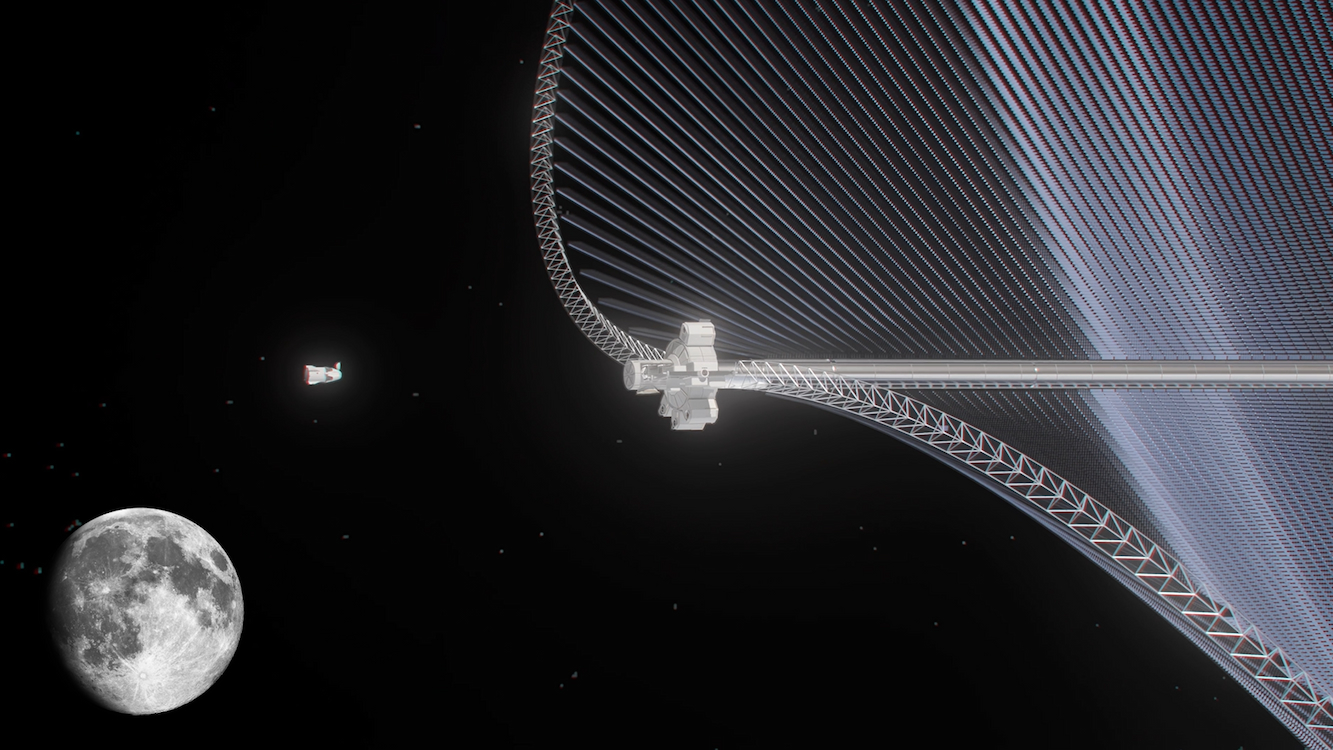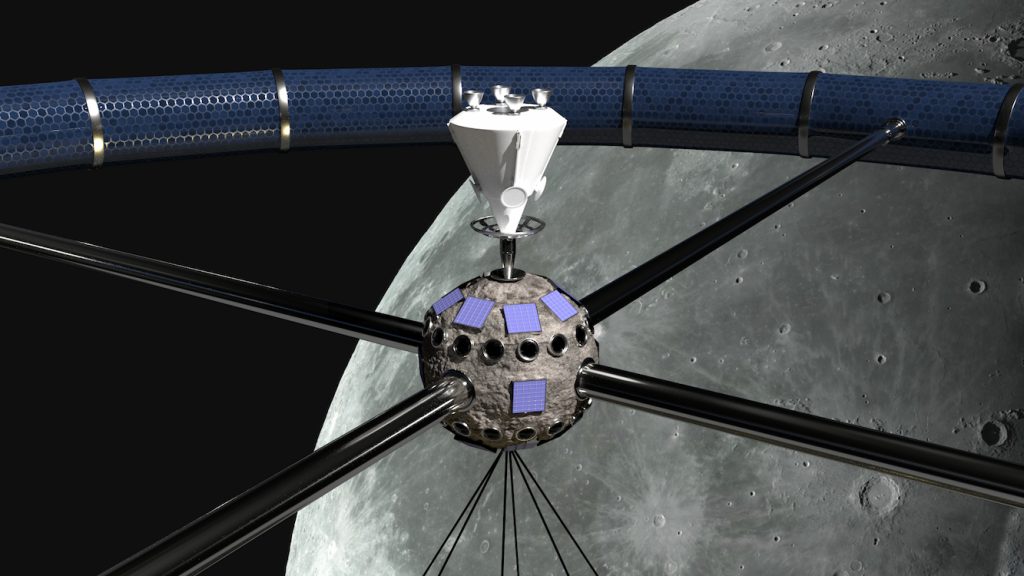
A Swiss company called Astrostrom is working with the European Space Agency to study the possibility of building a solar power satellite using lunar resources.
Part of ESA’s Open Space Innovation Platform, the company designed a structure it calls the Greater Earth Lunar Power Station, or “GE⊕-LPS” for short, with “⊕,” is the astronomical symbol for Earth.
According to Astrostrom’s website, “The Greater Earth Lunar Power Station (GE⊕-LPS) is a habitable space station in lunar orbit that is designed to provide solar energy for lunar operations.” It would harness resources collected from the Moon, including lunar-manufactured solar cells, to transmit megawatts of microwave power to the lunar surface.
By utilizing iron pyrite monograin-layer solar cells produced directly on the Moon, the GE⊕-LPS project aims to establish sustainable energy generation while minimizing reliance on Earth-based manufacturing and transportation.
Join our Discord Server: Join the community with forums and chatrooms about space!
The Astrostrom study potentially presents a comprehensive blueprint for large-scale production of environmentally-friendly solar power satellites. Overcoming the challenges associated with launching massive satellites from Earth, the GE⊕-LPS envisions a future of manufacturing processes and assembly concepts taking place in lunar orbit.
This approach could pave the way for subsequent solar power satellites to be efficiently produced using lunar resources, sources close to the project say, effectively meeting Earth’s growing clean energy needs.
Positioned at an Earth-Moon Lagrange point roughly 38,121 miles (61,350 kilometers) from the lunar surface, the power station also presents opportunities as a potential habitat. Serving as a bridge between Earth and Moon operations, the GE⊕-LPS seeks to provide adaptive artificial gravity, offering an attractive destination for tourists while also serving as a testbed for future space settlements.

Compared to satellites launched from Earth, lunar-made solar power satellites would require significantly less velocity change to achieve geostationary Earth orbit. This advantage may hold the potential to revolutionize the space industry, allowing for the development of a cislunar transportation system and the establishment of lunar mining, processing and manufacturing facilities.
These advancements are seen as potential contributions to the growth of a two-planet economy, propelling the advent of a spacefaring civilization.
Importantly, the study emphasizes that the GE⊕-LPS concept does not rely on technological breakthroughs with many core technologies for lunar surface operations are already in use or in advanced stages of development on Earth.
By adapting and extrapolating these technologies to the lunar environment, Astrostrom and ESA seek unique deliverables in modular form and remote operations on the Moon’s surface.
Furthermore, the study suggests that lunar-made solar power satellites would not only be more cost-effective than their Earth-developed counterparts but also offer cost-competitive electricity compared to terrestrial power alternatives. This finding underscores the economic feasibility and potential of space-based solar power as a solution to Earth’s increasing energy demands.
The GE⊕-LPS design draws inspiration from the elegant flight of a butterfly. Its V-shaped solar panels with integrated antennas are arranged in a helix configuration, covering an area of over one square kilometer.
This design allows for the continuous generation of 23 megawatts of energy, with a goal of meeting the energy requirements of future lunar activities and crewed bases.
Through the investigation of the technical and financial feasibility of the GE⊕-LPS concept, this study aims to set the stage for a future of sustainable energy generation from space. Confirmation of the concept’s practicality by ESA’s SOLARIS research and development initiative could pave the way for larger-scale deployment of lunar-made solar power satellites.
FTC: We use income earning auto affiliate links. More.




Comments